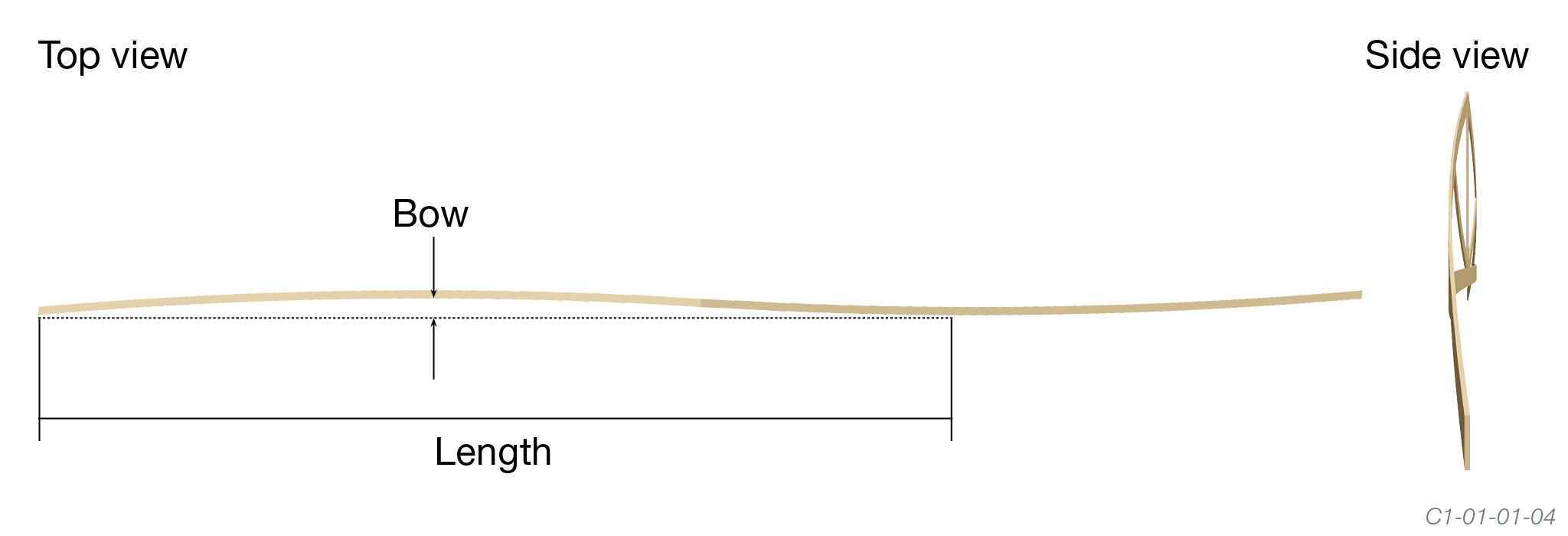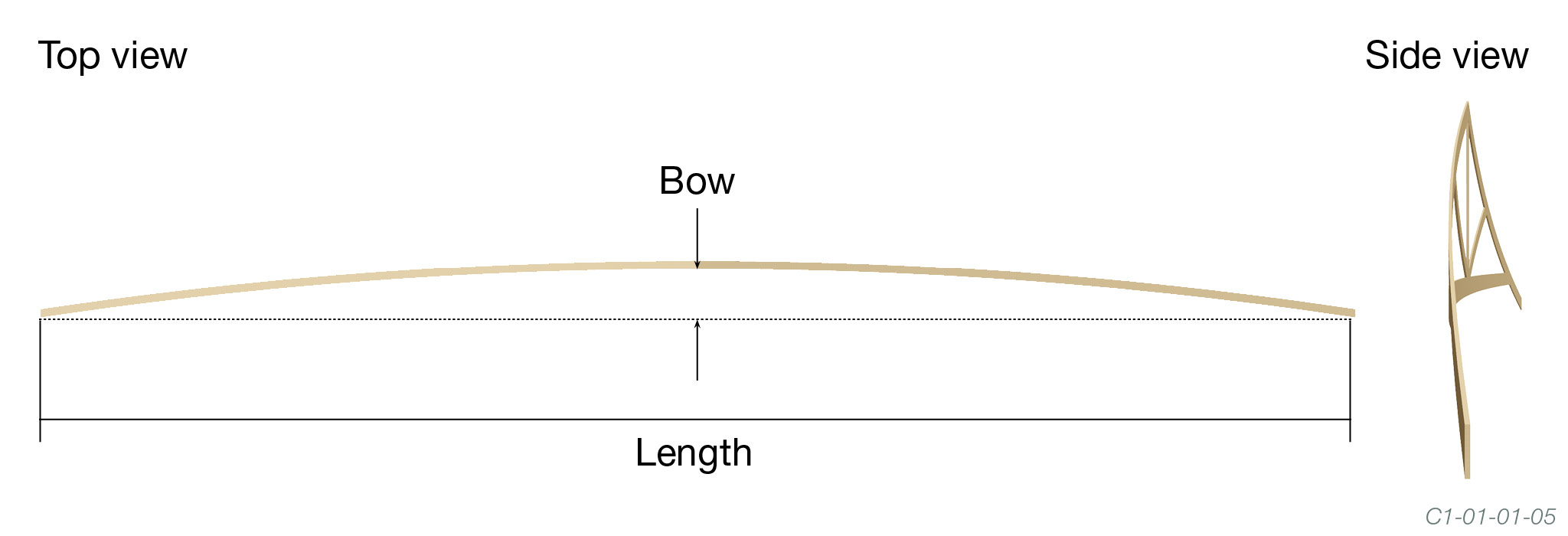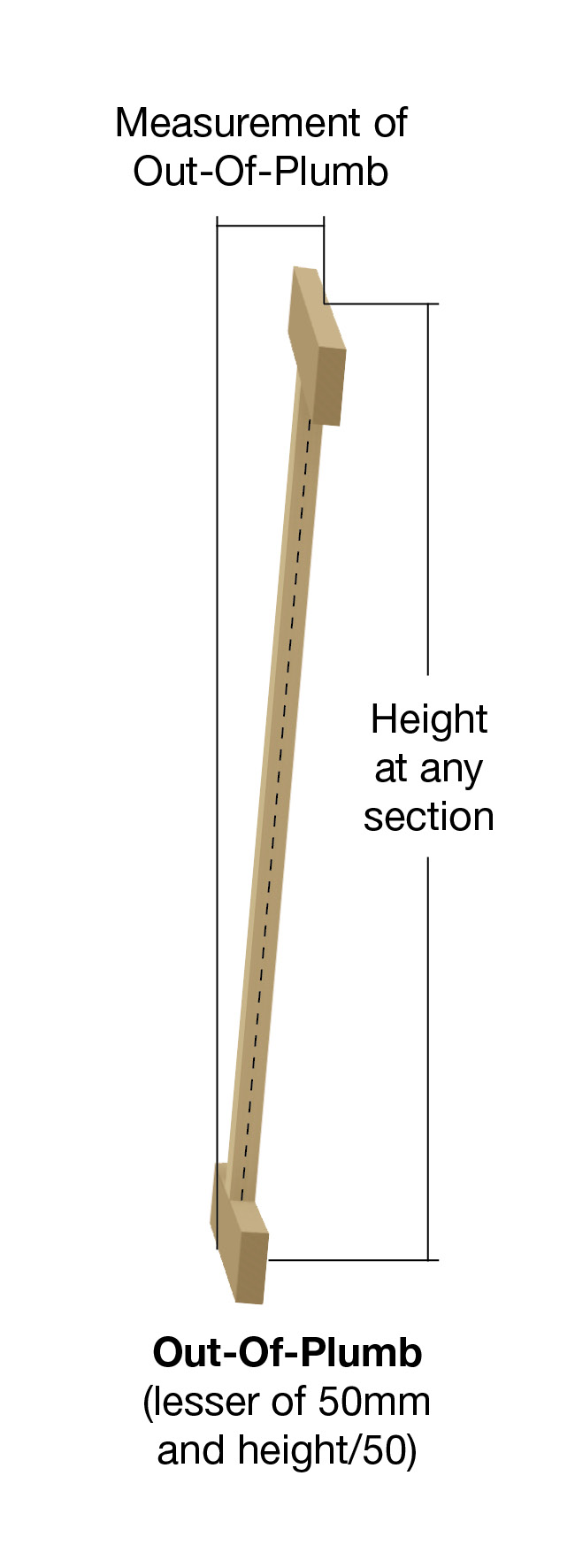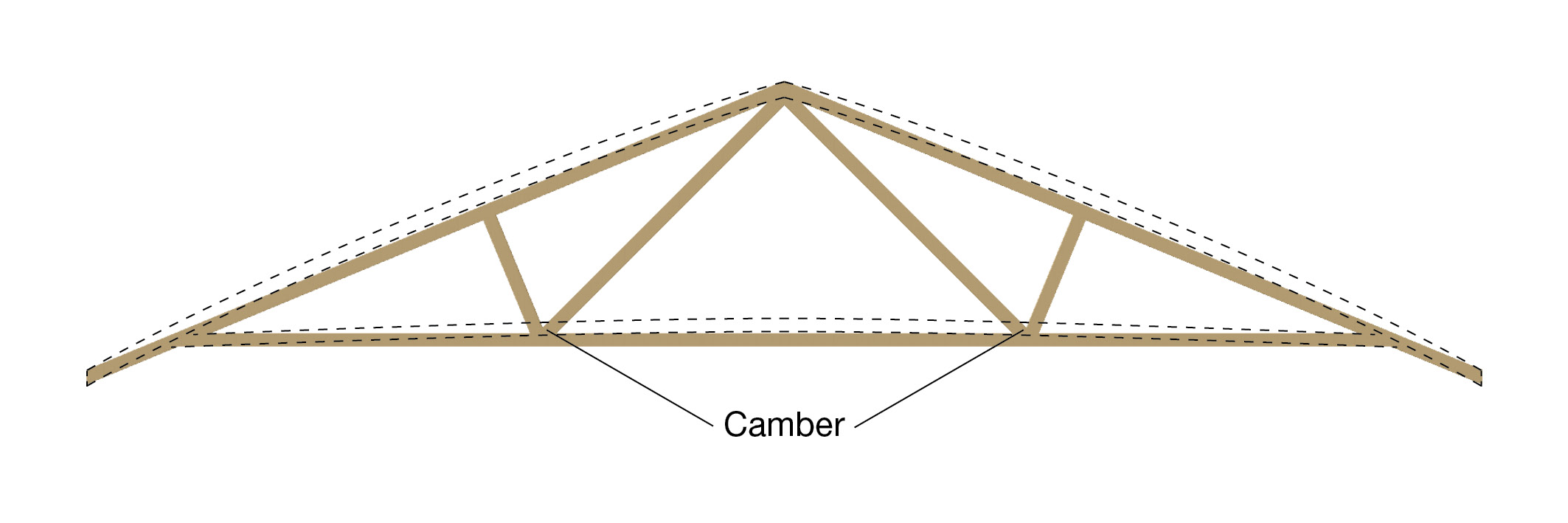For proper truss safety and performance, trusses must be installed straight and vertical and in their correct position as specified in sections 8.1 to 8.2.
NOTE: The best method for ensuring correct truss positioning is to mark the locations on the top plate or other supporting elements in accordance with the truss layout prior to truss installation.
Bow
Trusses must be erected with minimal bow in the truss and in any chord, with a tolerance not exceeding the lesser of length of the bowed section/200 and 50mm, where length is defined in Figure C1-01-01-04 or Figure C1-01-01-05.
Figure C1-01-01-04

Figure C1-01-01-05

Plumb
Trusses must be erected so that no part of the truss is out of plumb with a tolerance not exceeding the lesser of height/50 and 50mm where the height is measured at the location under consideration (see Figure C1-01-01-03).
Figure C1-01-01-03

Spacing
Trusses must be erected at a spacing not exceeding that specified in the design specifications or truss layout.
Camber
Trusses are built with a camber in the bottom chord which is intended to compensate for the long-term deflection due to dead loads. A girder truss will have more camber than other trusses.
Figure A1-02-02-10
